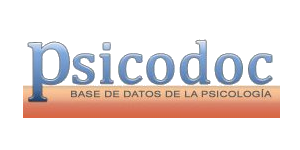Avoidance and Fear in Social Phobia in Schizophrenic Patients
DOI:
https://doi.org/10.20435/pssa.v16i1.2375Palavras-chave:
evitação, medo, fobia social, esquizofrenia, transversalResumo
Aim: To evaluate avoidance and fear in comorbid social phobia (SF) in patients with schizophrenia (SZ). Method: cross-sectional study with patients already diagnosed with schizophrenia at the Schizophrenia Outpatient Clinic of the Hospital de Clínicas de Porto Alegre (HCPA) assessed for social anxiety comorbidity by the Liebowitz Social Anxiety Scale (LSAS). Results: the sample identified 59 patients with concurrent SZ-SF. Of these 17% had mild, 40.7% moderate and 42.4% severe SF. The study of SF dimensions defined by LSAS revealed significantly higher levels of avoidance (average 28.5 points), compared to fear (average 25 points). Conclusions: The study identified levels of social anxiety mostly at moderate and severe level (83.1%) in patients with comorbid SZ-SF after stabilization of psychotic symptoms. The component of avoidance of social situations is more frequent and intense than fear itself, and is related to additional problems in personal and professional life of patients after stabilization. If this evidence is confirmed with larger samples, it may call for increased surveillance and interventions addressing SF as part of the treatment in schizophrenia. Additionally, it will move treatment and training further from control of delusions and hallucinations, open the opportunity for creation and testing specific techniques for SA management and consequently increase chances of functionality improvement of patients with schizophrenia.
Referências
Aikawa S., Kobayashi H., Nemoto T., Matsuo S., Wada Y., Mamiya N., Yamaguchi T., Katagiri N., Tsujino N., Mizuno M. (2018). Social anxiety and risk factors in patients with schizophrenia: Relationship with duration of untreated psychosis. Psychiatry Research, 263, 94-100. PMID: 29510345.
Alomari, N. A., Bedaiwi, S. K., Ghasib, A. M., Kabbarah, A. J., Alnefaie, S. A., Hariri, N., Altammar, M.A., Fadhel, A.M., & Altowairqi, F.M. (2022). Social Anxiety Disorder: Associated Conditions and Therapeutic Approaches. Cureus, 19;14(12), e32687. http://dx.doi.org/10.7759/cureus.32687
American Psychiatric Association (APA). (2022). DSM-5-TR: Manual diagnóstico e estatístico de transtornos mentais. 6ª ed. Revisão Texto. Artmed.
Burato, K. R., Crippa, J. A. S, Loureiro, S. R. (2009). Transtorno de ansiedade social e comportamentos de evitação e de segurança: Uma revisão sistemática. Estudos de Psicologia, 14(2), 167–174. https://doi.org/10.1590/S1413-294X2009000200010
CRANE, Rebecca S. et al. (2017). What defines mindfulness-based programs? The warp and the weft. Psychological medicine, v. 47, n. 6, p. 990-999, 2017.
DATASUS. Ministério da Saúde. (2008). F40-F48 Transtornos neuróticos, transtornos relacionados com o “stress” e transtornos somatoformes. http://www2.datasus.gov.br/cid10/V2008/WebHelp/f40_f48.htm
Da Silva, G. F. A, Alves, J. M. P., De Lima, N. M. (2019). Características da Fobia Social em Meios Acadêmicos. Revista Multidisciplinar do Sertão, 1(4), 547–556. https://doi.org/10.37115/rms.v1i4.157
Dos Santos, L. F. (2012). Estudo de validade e fidedignidade de Escala de Ansiedade Social de Liebowitz – versão auto-aplicada. Dissertação (Mestrado em Ciências, área Saúde Mental). Faculdade de Medicina de Ribeirão Preto da Universidade de São Paulo (USP) 2012. Disponível em: https://teses.usp.br/teses/disponiveis/17/17148/tde-03112012-112449/pt-br.php. Acesso em: 10 fevereiro de 2021.
Francisco D. K. S., Toledo, J. D. K., Tavares, F. S. (2019). Adversidade da Ansiedade Social aplicada na fase da Adolescência. Revista Científica Fagoc Multidisciplinar, IV, 1–xx.
Fuentes, D. D., Malloy-Diniz, L. F., De Camargo, C. H. P., Cosenza R. M. (2014). Neuropsicologia: Teoria e prática. 2ª ed. Artmed.
Gabbard, G. O. (2016). Psiquiatria psicodinâmica na prática clínica. 5ª ed. Artmed.
Goldin, P. R., Thurston, M., Allende, S., Moodie, C., Dixon, M. L., Heimberg, R. G., & Gross, J.J. (2021). Evaluation of Cognitive Behavioral Therapy vs Mindfulness Meditation in Brain Changes During Reappraisal and Acceptance Among Patients With Social Anxiety Disorder: A Randomized Clinical Trial. JAMA Psychiatry, 78(10):1134-1142. https://doi.org/10.1001/jamapsychiatry.2021.1862
Kibru, B., Getachew, T., Demeke, D., Endalamaw, S. (2020). The Prevalence and Correlates of Social Anxiety Symptoms among People with Schizophrenia in Ethiopia: An Institution-Based Cross-Sectional Study. Schizophrenia research and treatment. 24:2020:3934680. ID 3934680.
Levitan, M. N., Chagas, M. H. N., Crippa, J. A. S., Manfro, G. G., Hetem, L. A. B., Andrada, N.C., Salum, G.A., Isolan, L., Ferrari, M.C.F., & Nardi, A.E. (2011). Guidelines of the Brazilian Medical Association for the treatment of social anxiety disorder. Brazilian Journal of Psychiatry, 33(3). https://doi.org/10.1590/S1516-44462011000300014
Liu, X., Yi, P., Ma, L., Liu, W., Deng, W., Yang, X., Liang, M., Luo, J., Li, N., & Li, X. (2021). Mindfulness-based interventions for social anxiety disorder: A systematic review and meta-analysis. Psychiatry Research. 300, 113935. https://doi.org/10.1016/j.psychres.2021.113935
Mauro, S. S. S., & Mauro, M. Y. C. (2021). O Uso da Robótica, Games, Realidade Virtual e Realidade Aumentada no Tratamento de Autismo, Demência, Esquizofrenia e Fobia. Caderno de Pesquisa Aplicada, 1(3), 1–11. http://isca.edu.br/revista/index.php/cpesqaplic/article/view/62
National Institutes of Health (NIMH). (2006). Mental Health Information, Statisticis, Schizophrenia. Bethesda (Washington). National Institutes Of Health. https://www.nimh.nih.gov/health/statistics/schizophrenia#:~:text=Schizophrenia%20is%20one%20of%20the%20top%2015%20leading%20causes%20of%20disability%20worldwide.&text=Individuals%20with%20schizophrenia%20have%20an,age%20than%20the%20general%20population).&text=The%20estimated%20average%20potential%20life,the%20U.S.%20is%2028.5%20years
Nemoto, T., Uchino, T., Aikawa, S., Saito, J., Matsumoto, H., Funatogawa, T., Yamaguchi, T., Katagiri, N., Tsujino, N., Mizuno, M. (2019). Social anxiety and negative symptoms as the characteristics of patients with schizophrenia who show competence-performance discrepancy in social functioning. Psychiatry and Clinical Neurosciences 73(7), 394–399.
Osório, F. L., Crippa, J. A. S., Loureiro, S. R. (2005). Instruments for the Assessment of Social Anxiety Disorder. Revista Psiquiatria Clínica., 32(2), 73–83. https://doi.org/10.1590/S0101-60832005000200003
Park, Seon-Cheol, et. al. (2019). Establishing the cut-off scores for the severity ranges of schizophrenia on the BPRS-6 scale: findings from the REAP-AP. Psychiatry and Clinical Psychopharmacology, 29:4, 895-898.
Pelissolo, A., Abou Kassm, S., & Delhay, L. Therapeutic strategies for social anxiety disorder: Where are we now? Expert Review Neurotherapeutics 19(12), 1179–1189. https://doi.org/10.1080/14737175.2019.1666713
Peres, K. R. L. (2018). Transtorno de ansiedade social: Psiquiatria e psicanálise [Dissertação de mestrado, Programa de Pós-Graduação em Psicologia Clínica, Universidade de São Paulo]. Biblioteca Digital de Teses e Dissertações da USP. https://www.teses.usp.brlico › peres_me
Ruiz-Iriondo, M., Salaberría, K., Echeburúa, E., Iruín, Á., Gabaldón, O., Fernández-Marañón, I. (2019). Global functioning among middle-aged patients with chronic schizophrenia: The role of medication, working memory and verbal comprehension. Anales de. Psicologia, 35(2), 204–213.
Silva, A. M., Dos Santos, C. A., Miron, F. M., Miguel, N. P., Furtado, C. C., Bellemo, A. I. S. (2016). Esquizofrenia: Uma revisão bibliográfica. Revista UNILUS Ensino e Pesquisa, 13(30), 1-8.
Soares, L. M. D. (2019). A Esquizofrenia na Terapia Cognitivo comportamental: Uma Relação Possível? [Trabalho de Conclusão, Curso de Psicologia, Faculdade de Educação e Meio Ambiente (FAEMA)]. https://repositorio.faema.edu.br/bitstream/123456789/2623/1/Laura%20Maria%20Duque%20Soares%20.pdf
Teixeira, A. D., Belmonte-De-Abreu, P. S. (2022). Prevalence of Social Anxiety Disorder in patients with Schizophrenia. Abstract. In Congresso Brasileiro Online de Pesquisas e Inovações em Saúde – I CONASAU. Multidisciplinary Journal on Health, 3(4), https://ime.events/conasau/anais?fbclid=PAAaZPTR_0NR4_nclVv4tS6xe3_7ZEJdZyQInPKAYt1nyavW3X_mUBL0-dfkQ
Teixeira, A. D., Belmonte-De-Abreu, P. S. (2023). Prevalence of Social Anxiety Disorder in patients with Schizophrenia. Poster format. In I há conversa no Chlo. Meeting of the Psychiatry and Mental Health Service of the Centro Hospitalar de Lisboa Ocidental.
Trancoso, I. I. V. (2022). Epigenética nas Perturbações de Ansiedade (Dissertação de Mestrado em Medicina, Faculdade de Ciências da Saúde, Departamento de Ciências Médicas, Universidade Beira Interior]. https://ubibliorum.ubi.pt/handle/10400.6/12838
Van Dorn, R. A., Desmarais, S. L., Grimm, K. J., Tueller, S. J., Johnson, K. L., Sellers, B.G., & Swartz, M.S. (2016). The latent structure of psychiatric symptoms across mental disorders as measured with the PANSS and BPRS-18. Psychiatry Research, 30(245), 83–90. https://doi.org/10.1016/j.psychres.2016.08.029
Vasconcelos, E. H. S., Pinto, M. P. C., Ortiz, S. P., Nishihara, V. Y. K., Carvalho, E. B., & Cançado, P. L. (2021). Esquizofrenia e seus Prelúdios Cognitivos: Uma Revisão Integrativa, Sistemática e Abrangente. Revista Ibero-Americana de Humanidades, Ciências e Educação, 7(8), 658–671. https://doi.org/10.51891/rease.v7i8.1995
Weittenhiller, L. P., Mikhail, M. E., Mote, J., Campellone, T. R., Kring, A. M. (2021). What gets in the way of social engagement in schizophrenia? World Journal Psychiatry, 11(1), 13–26.
Publicado
Como Citar
Edição
Seção
Licença

Este trabalho está licenciado sob uma licença Creative Commons Attribution 4.0 International License.
Os artigos publicados na Revista Psicologia e Saúde têm acesso aberto (Open Access) sob a licença Creative Commons Attribution, que permite uso, distribuição e reprodução em qualquer meio, sem restrições, desde que o trabalho original seja corretamente citado.







.jpg)





